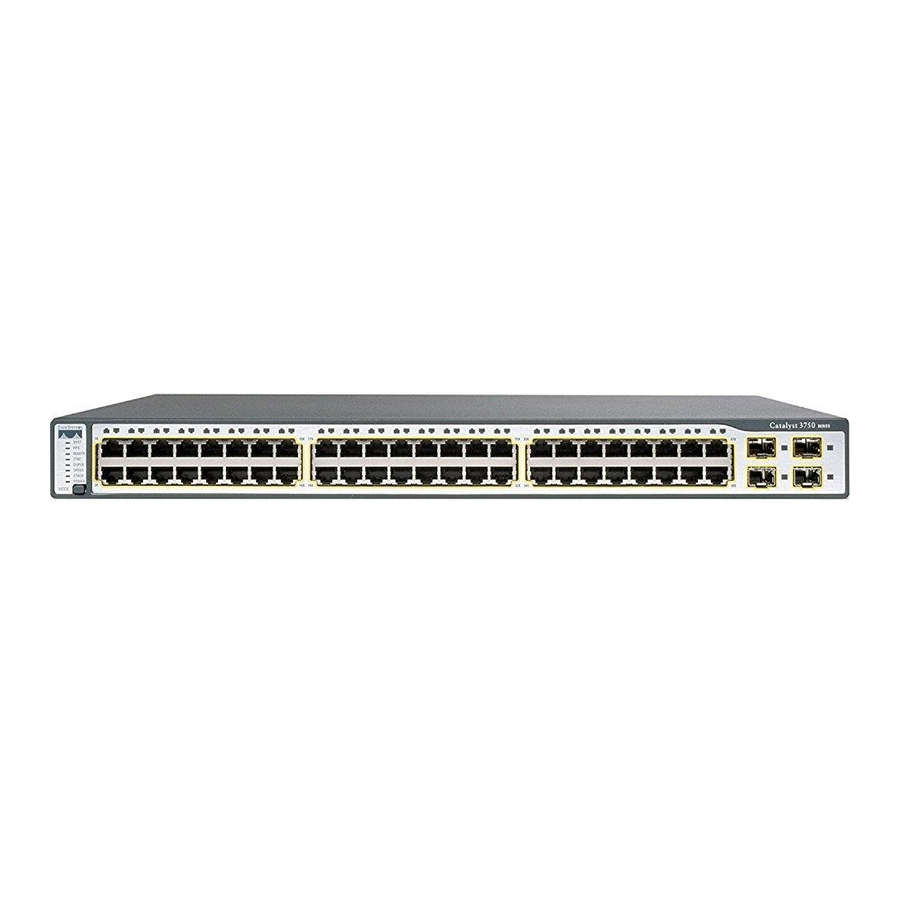Q. Do the Cisco Catalyst 3750 switches have Redundant Power Supply (RPS) support?
A. Yes. The Cisco Catalyst 3750 switches can be supported by the Cisco RPS 675 and the Cisco RPS 300. Both the
Cisco RPS 675 and RPS 300 provide superior internal power source redundancy for up to six Cisco networking
devices. This results in improved fault tolerance and network uptime. For more information go to:
http://www.cisco.com/en/US/products/hw/accessor/ps2883/products_data_sheet09186a0080150e31.html.
Q. What is the difference between Cisco Redundant Power Supply 675 (RPS 675) and RPS 300?
A. The Cisco RPS 675 is the next-generation of the RPS 300. It provides more power (675W) than RPS 300 (300W).
RPS 675 can provide up to 375W of –48V power, and 300W of 12V power. Unlike the Cisco RPS 300, the RPS 675
comes up in active mode. The customer does not need to push a button to activate the RPS 675 after a power failure.
Q. Does it cost more for a Layer 3 or special-features license?
A. The Cisco Catalyst 3750-24TS-E, 3750-48TS-E, 3750G-24T-E, 3750G-24TS-E are loaded with the Enhanced
Multilayer Software Image, so all feature license fees are part of the standard list price. However, the Cisco Catalyst
3750-24TS-S, 3750-48TS-S, 3750G-24T-S, 3750G-24TS-S switches are loaded with the Standard Multilayer
Software Image; these switches can be upgraded to the Enhanced Multilayer Software Image with the purchase of the
Enhanced Multilayer Software Image upgrade kit (part number CD-3750-EMI=). The Standard Multilayer Software
Image includes RIP and static routing. For dynamic IP routing features (BGPv4, OSFP, EIGRP, IGRP), the EMI is
required.
Q. What features are only supported on the EMI?
A. The following features and functionality are supported with the Enhanced Multilayer Software Image:
• Dynamic IP routing protocols for load balancing and constructing scalable LANs:
– Open Shortest Path First (OSPF)
– Interior Gateway Routing Protocol (IGRP) and Enhanced IGRP (EIGRP)
– Border Gateway Protocol (BGPv4)
• Equal-cost routing for load balancing and redundancy
• Cisco standard and extended IP security Router RACLs for defining security policies on routed interfaces for
control plane and data plane traffic
• Fallback bridging for forwarding of non-IP traffic between two or more VLANs
• Cisco Hot Standby Router Protocol (HSRP) to create redundant failsafe routing topologies
• Protocol-Independent Multicast (PIM) for IP multicast routing within a network that enables the network to
receive the multicast feed requested and for switches not participating in the multicast to be pruned—support for
PIM sparse mode (PIM-SM), PIM dense mode (PIM-DM), and PIM sparse-dense mode
• Distance Vector Multicast Routing Protocol (DVMRP) tunneling for interconnecting two multicast-enabled
networks across nonmulticast networks
• Policy-based Routing (PBR) allows superior control by enabling flow redirection regardless of the routing
protocol configured
All contents are Copyright © 1992–2003 Cisco Systems, Inc. All rights reserved. Important Notices and Privacy Statement.
Cisco Systems, Inc.
Page 5 of 10

